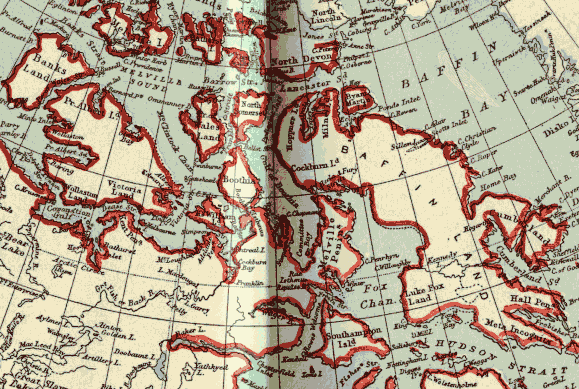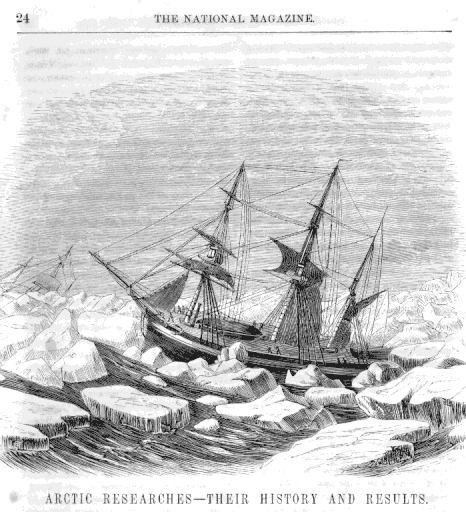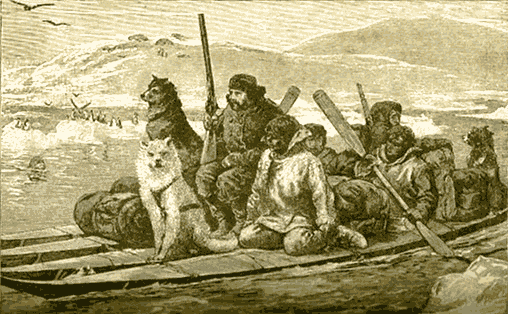Northwest Passage
Today, we look for the Northwest Passage. The University of Houston's College of Engineering presents this series about the machines that make our civilization run, and the people whose ingenuity created them.
When I was ten, a movie made a big impression on me. It was Northwest Passage with Spencer Tracy -- all about Rogers' Rangers in the French and Indian War. Rogers was trying to find a Northwest Passage, a northern water route from Atlantic to Pacific.
That search had been going on since the 16th century. Getting to the Pacific by ship meant sailing Cape Horn at the tip of South America -- a long and dangerous trip. In the north, Hudson's Bay held out hope, and in 1576, the English sailor Frobisher thought he'd found the passage. But he'd only found a long bay in Baffin Island. Further and further north of Canada those wooden ships pressed in search of a shipping lane. Yet it was 1852 before anyone even found a northern outlet from Hudson's Bay.
That landscape is horribly complicated. A great tangle of islands runs from Canada to the polar ice cap. The map shows there really is a Northwest Passage where Lancaster Sound, Barrow Strait, Melville Sound, and McClure Strait all form one long channel.
What finally broke the ice, if you'll forgive the expression, was the voyage of John Franklin, who'd once fought with Nelson at Trafalgar. Franklin's two ships set out in 1845 to find the Passage. He sailed over the north side of Baffin Island, and vanished.
Yesterday I found a bound volume of the National Magazine issues from 1855. One article tells the history of the search for a passage and it focuses on Franklin and a man named McClure.
Franklin's disappearance had caught the public's attention. The search for Franklin intensified the search for the Passage itself. Robert McClure was a searcher who set out in 1850.
McClure sailed around the north coast of Alaska and from there found his way into the west end of the Passage. There he spent three years, most of them with his ships frozen into the ice. During that time he set off on foot to find the mid-point of the Passage which had already been reached from the Atlantic side.
For that accomplishment, my old magazine credits McClure with discovering the Northwest Passage. But the article ends with a note in proof saying they now knew Franklin was dead. Later, we learned that he'd been frozen into the ice after he'd wandered about those islands. He and his men starved to death after they'd come within 90 miles of the channel that led out to the west. So modern writers often credit him with finding the Passage.
But credit is hollow. It was 1906 before Roald Amundson sailed all the way through the Passage, and it took him three years in an ice cutter. It was 1944 before a Canadian ship made it through in one season. By then, we were using airplanes to get around that part of the world. So in any practical sense, the only Northwest Passage is one that might serve a nuclear submarine. There is no Passage -- only a history of brave people suffering incredible hardships to learn the region was impassable after all.
I'm John Lienhard, at the University of Houston, where we're interested in the way inventive minds work.
(Theme music)
Arctic Researches -- Their History and Results (article credited to "Hogg's Instructor"). The National Magazine: devoted to Literature, Art, and Religion, Vol. VI, January to June, 1855, pp. 24-31.
A great deal more is written about this subject, but a good place to begin is to search the Encyclopaedia Britannica under such words as Northwest Passage, McClure, Franklin, Amundson, Frobisher, Baffin, etc. The older editions are richer in detail than the more recent ones. You should not attempt to follow anything written about the Arctic explorations without first getting out a good atlas that shows details of the islands in the Arctic Ocean.
Listener Larry Haymer has pointed out that the idea of sending shipping through the Northwest Passage might not be as dead as I've portrayed it. In 1969, the S.S. Manhattan, a tanker equipped with an icebreaker bow, attempted the trip. Since the ship was slightly underpowered, the trip was less than a success. Before such traffic was replaced with more powerful ships, the Alaskan pipeline went into service and the idea was dropped. Nevertheless, the S.S. Manhattan did suggest that, with a few alterations, such shipping would be feasible.

Click on the image for an enlargement
The Northwest Passage
From the 1897 Encyclopaedia Britannica

Click on the image for an enlargement
Artist's Impression of Franklin's Ship
From the 1855 National Magazine

Click on the image for an enlargement
An impression of Lt. Schwatka's trip (from The Search for Franklin, 1888)
Image courtesy of Special Collections, UH Library